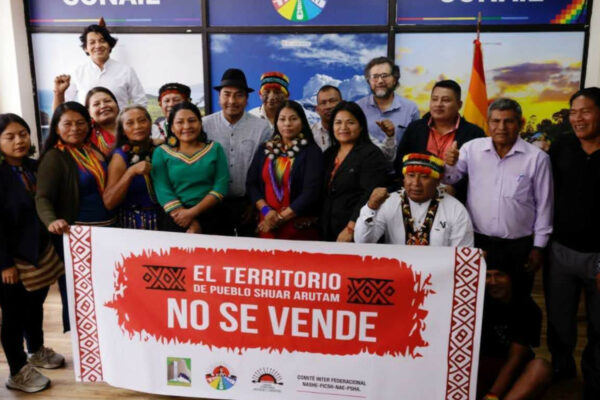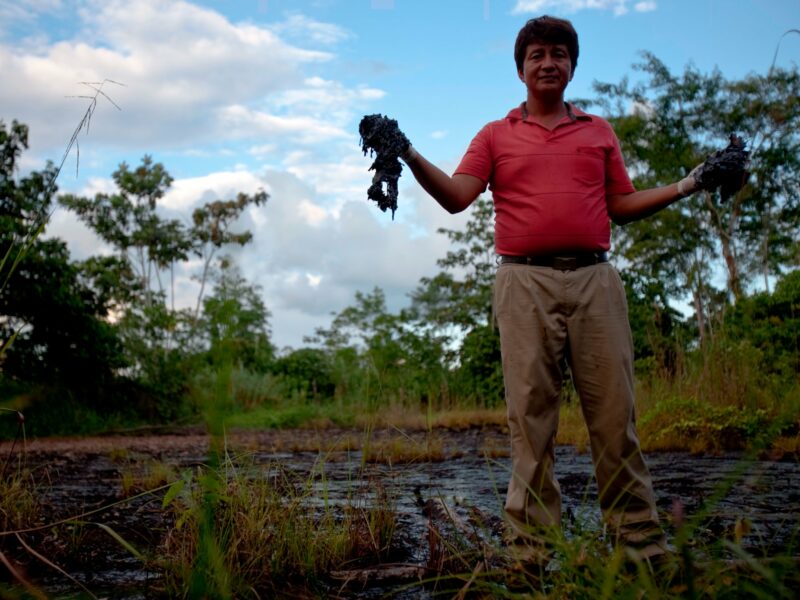One of Anna Wintour’s most significant (and profitable) contributions to Vogue, we learn in The September Issue, has been her decision to put movie stars – rather than fashion models – on the magazine’s cover. That gives The September Issue an unintended but hardly insignificant point of connection with director Joe Berlinger’s Crude, a remarkable documentary about the decade-and-a-half-long, multibillion-dollar class action lawsuit filed by indigenous Ecuadorian villagers against the Chevron oil company alleging toxic pollution of the local soil and water supply. At one point in Berlinger’s film, longtime Amazon Rainforest advocate (and wife of Sting) Trudie Styler develops an interest in the case, and her involvement leads directly to a flurry of increased U.S. media attention (including a Vanity Fair profile of charismatic Ecuadorian prosecutor Pablo Fajardo). Whatever one thinks about the vacuity of celebrity culture, these two films convincingly argue that celebrities can and do make things happen, whether sustaining a magazine’s viability or drawing attention to corporate America’s latest atrocity. Certainly, in an age when shirtless pictures of Barack Obama are as much in demand by the tabloids as paparazzi snaps of Britney Spears, resistance is futile.
Styler’s involvement in the Chevron case is one of the few bright spots in Crude, which otherwise unfolds as an infuriating litany of South American exploitation, back-room glad-handing and bureaucratic dead ends. For nearly 30 years, beginning in the mid-1960s, the former Texaco oil company (acquired by Chevron in 2001) drilled for oil in the Euacdorian Amazon, in and around the ancestral homeland of the native Cofán Indian community. In 1992, Texaco’s government-granted concession ended and the company ceded control of its drilling sites to the state-owned Petroecaudor, after allegedly embarking on a government-mandated $40 million “environmental remediation” project. And yet, today the soil and waters of the area still run black with oil, the Cofán are dying of cancer at an alarming rate, and the blame for this enviro-disaster is being passed between Chevron and Petroecuador faster than a Bobby Hull slapshot.
No stranger to gnarly courtroom thickets, Berlinger, together with his longtime filmmaking partner Bruce Sinofsky, previously directed the Sundance Audience Award winner Brother’s Keeper (which centered around a fratricide trial in the small, dairy-farming community of Munnsville, New York) and the two Paradise Lost documentaries (about the ongoing travails of three Arkansas teenagers convicted, on questionable evidence, of murdering three eight-year-old boys). In the gripping, intrinsically cinematic Crude, he does an equally superb job of taking us through the twists and turns of a legal battle nearly as long as the Amazon itself, and with no discernible end in sight. As usual, Berlinger presents both sides of the case as fairly and non-judgmentally as possible, never inserting himself into the narrative and turning the audience, in effect, into the jury. Chevron even sends its in-house environmental scientist out to speak to the filmmaker in a defensive interview that plays like an extended Tilda Swinton outtake from Michael Clayton. Talk about your ice queens: next to this woman, Ana Wintour seems a positive ray of sunshine.
If Crude is the most urgent film I’ve seen at Sundance this year, Boy Interrupted is unquestionably the most harrowing. Directed by Dana Heinz Perry and photographed by her husband, Hart Perry, this documentary isn’t torn from the headlines, but rather the bloodline. In 2005, the Perrys’ 15-year-old son, Evan, committed suicide by jumping from the bedroom window of their New York City apartment – something the bipolar teen had talked about doing since as early as age five. That event created an odd symmetry with the death, 30 years earlier, of Hart Perry’s own younger brother, who asphyxiated himself with car exhaust at 21. Boy Interrupted tries to make sense of these two senseless acts by reconstructing them, through home movies and interviews with surviving friends and family, in frequently agonizing detail.
Nothing is private here, obsessive self-documentation the order of the day. “Filmmaking has been the family business for almost twenty years now,” Dana Perry notes in a statement included in the movie’s press kit, but it’s actually even longer if you count the interview footage (included here) Hart Perry shot of his own parents in the immediate aftermath of his brother’s death. Three decades later we see the Perry matriarch again, now suffering from dementia and a fair amount of willful amnesia, once more asked to replay painful memories before the camera’s unforgiving gaze. The result is a deeply absorbing, undeniably creepy hybrid of catharsis and emotional exhibitionism – a movie that twists your guts into a gordian knot, then sends you out of the theater wondering if there are limits to those things that should be filmed and publicly shown. Boy Interrupted is hard to reckon with, but even harder to shake off. If Capturing the Friedmans had been directed by the Friedmans themselves, it might have looked something like this.













